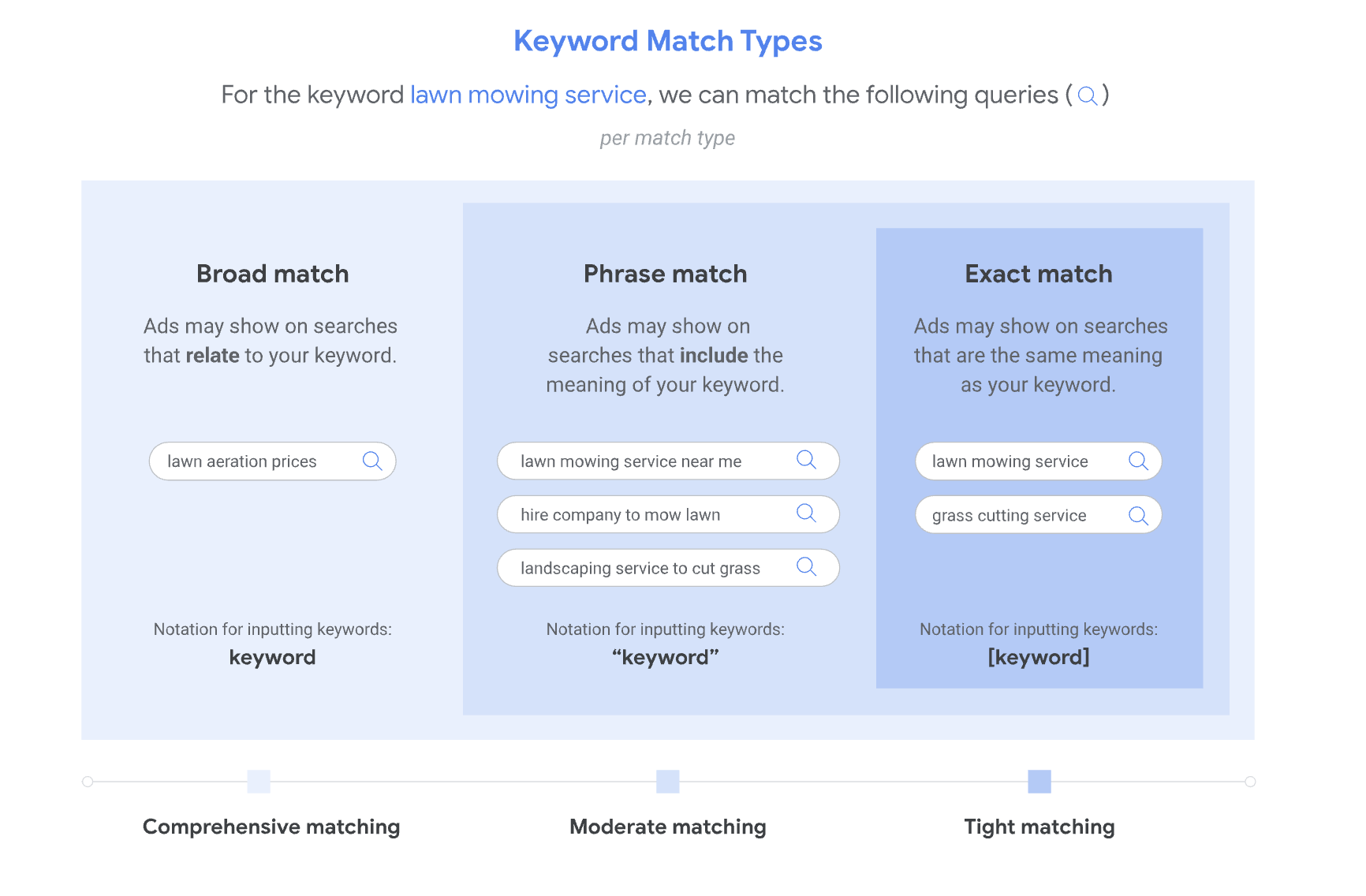The future of paid search keyword targeting

With Google’s persistent push toward automation, paid search capabilities have continued to evolve in recent years — and with that, standard practices and strategies can seemingly change on a dime. Although there’s an exhaustive list of automation-focused updates from Google, the introduction of Performance Max, which took the place of Smart Shopping and Local campaigns as we knew them, and the sunsetting of expanded text ads (ETAs) in the shift toward widespread adoption of responsive search ads (RSAs), are just two notable propellants that have pushed marketers to start embracing automation-driven strategies.
Through all of this, search campaign keyword match types have evolved with this shift and more emphasis has been placed on current targeting strategies. Although the end goal for search platforms is toward more simplified, behavior-based targeting approaches, there’s an important change for marketers: loss of control. When it comes to choosing keyword match types for search campaigns, this has resulted in the adoption of broader keyword targeting strategies, ultimately putting more trust into Google’s algorithm to capture relevant traffic.
A brief crash course on search campaign keyword match types
Keyword match types allow marketers to set guidelines on how close a user’s search query must be to their campaign’s targeted keyword for the ad to be both competitive and eligible to serve on the search engine results page (SERP). While there’s many factors that go into this, choosing the right match type plays a large role in driving high quality and relevant traffic to a site, and the scale at which marketers do so.
In any paid search campaign, there are three match types to choose from — broad match, phrase match, and exact match — as shown in an example below.

(image source)
Although one of Google’s last major shifts in keyword targeting stemmed from the discontinuation of broad match modified (BMM) keywords, Google continues to evolve the way keywords operate to cast a broader net for relevant queries — for example, through capturing “close variants” to phrase and exact match keywords that are being targeted, which allows keywords to match with searches that are similar, but not exactly identical to the keyword being targeted. Depending on the search query at hand, this could include reordered words (“shoes red” and “red shoes”), synonyms (“jacket” and “coat”), or related words (“floor” and “flooring”) among many other deviations of close variants. As it stands, however, broad match is ultimately the default recommended match type by Google since it captures phrase and exact match targeting queries.
That said, adoption of pure broad match targeting has historically been approached with caution given the sheer volume that these keywords can attract, and the lack of control that can come with it. When implemented, continuous search term monitoring and negative keyword management have remained crucial to avoid bringing in irrelevant, high-cost traffic; a stark difference from the maintenance that exact and phrase match keywords typically need. But with automation and the expansion of user intent signals over time, broad match has started to become a more simplified, yet accurate, targeting strategy compared to using a more traditional mix of phrase and exact match targeting alone.
The benefits of leveraging broad match targeting within search campaigns
Over time, Google’s keyword targeting capabilities have evolved to make the implementation of broad match targeting strategies more practical and easier to navigate. Today, leveraging broad match keywords within paid search campaigns — whether in conjunction with exact and phrase match keyword targeting, or through using new features, such as brand restrictions for broad match, for example — provides a myriad of benefits:
- Expanded reach & traffic: As the highest volume-driving match type available, broad match keywords can capture more impressions and click traffic, ultimately leading to the potential for more sizable growth in leads or revenue depending on the performance metric at hand.
- Capturing long-tail searches: With the unpredictable nature of how consumers search, incorporating broad match helps ensure ads are in the right place at the right time to capture more unique, long-tailed searches. This is something that’s much more difficult to accomplish using phrase and exact match targeting alone.
- Keyword expansion inspiration: Since ads show for a wider range of related keywords, the broader search term variations and synonyms that are brought in can help uncover untapped segments and keywords of a target audience.
- Harnessing Google’s algorithm: Utilizing broad match aligns with Google’s push for automation, allowing marketers to stay more attuned to evolving user intent and search trends. Offering a combination of more available search volume and aligning more closely with intent-based queries, the reliability of broad match has evolved significantly with the ongoing enhancements in Google’s algorithm.
- Time savings: Since broad match keywords provide a more versatile, all-encompassing approach, there’s less of a need for an exhaustive keyword list to cover variations for the campaign. That means less time spent on campaign building, and more time available for ongoing optimizations and performance analysis.
Important to note is that these benefits come with the trade-off of less control for marketers in terms of controlling the exact searches ads show for. Compared to exact and phrase match targeting, broad match can — and will — pull in a broader number of searches that are deemed relevant to targeted keywords, and negative keyword management is critical to maintain accurate and efficient campaign performance. However, this isn’t necessarily a bad thing as the focus shifts toward campaign goals (lead volume, revenue efficiency, click traffic, etc.) and achieving the desired outcome, rather than fixating on the specifics, as is the case through standard exact and phrase match targeting. The benefits of expanding reach often outweigh the cons, and taking the leap to lean more into automation can garner strong growth and insights over time.
What marketers need to know
You might be wondering, “is keyword targeting going away?” The short answer: no. At least, not yet. Although Google has made great strides, there are still strong benefits to leveraging more traditional keyword targeting strategies — such as exact match keyword targeting for brand terms — if historical performance supports it. This isn’t to say that there couldn’t be a future where these match types become even more simplified than their current form but based on historical success and widespread use of niche targeting, it’d be difficult to discontinue these targeting options without the risk of oversimplification.
Although keyword targeting practices aren’t “one size fits all” for advertisers, it’s important to test new strategies as they emerge to gauge whether they could benefit performance. And as much as the search landscape has continued to evolve, automation can’t replace human input and strategic campaign direction. At the end of the day, no matter what targeting approach is being used, sticking to the basics will continue to be crucial elements in the success of paid search campaigns, and the necessity for ongoing hands-on management will persist.



